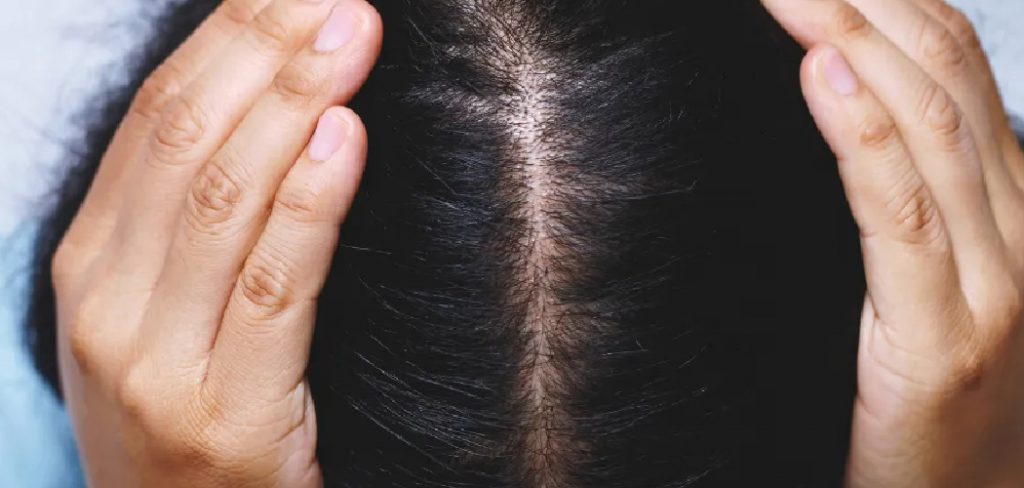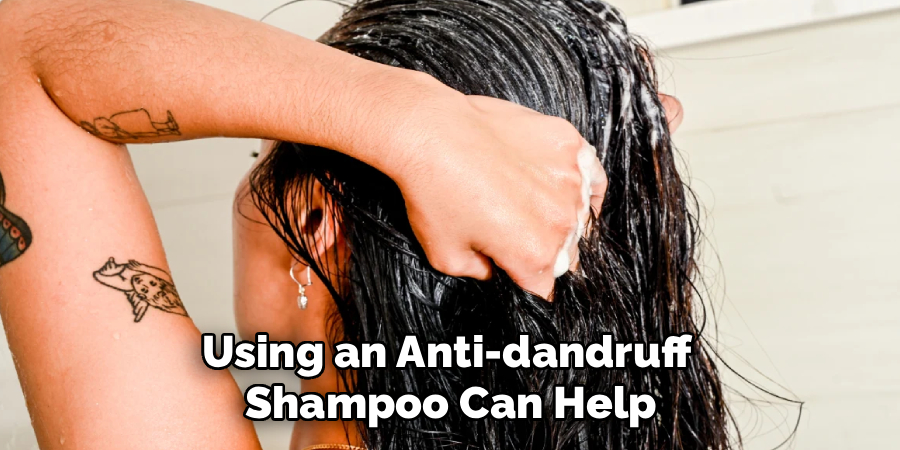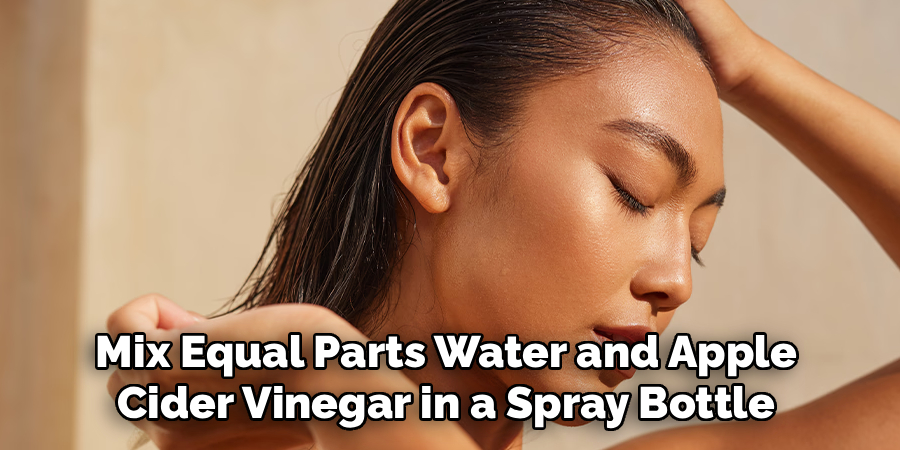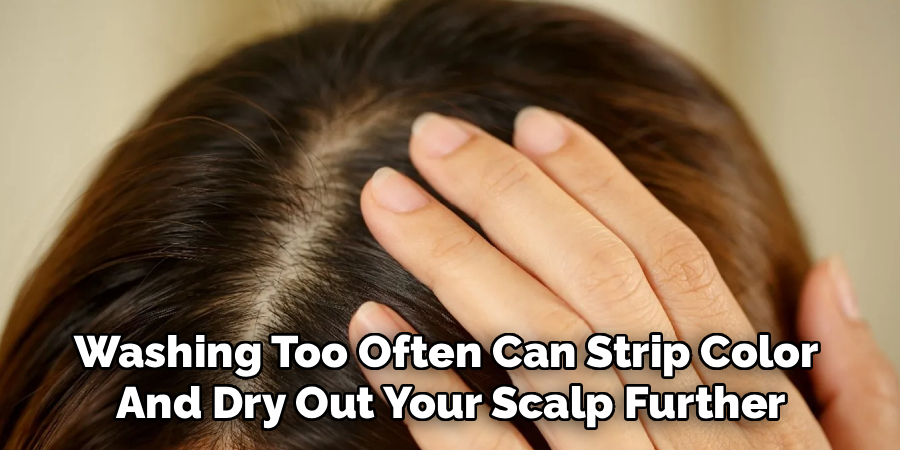You’ve just left the salon with a vibrant, fresh hair color, feeling confident and renewed. But then, you notice it—those pesky white flakes on your shoulders. Experiencing dandruff after a color treatment is a frustrating problem that can detract from your new look. Often, this isn’t true dandruff but rather a dry, irritated scalp reacting to the chemicals in the hair dye. The good news is that you don’t have to choose between your color and a flake-free scalp. This guide will provide clear, beginner-friendly instructions on how to get rid of dandruff after dying hair while protecting your investment and restoring scalp health.

Color-treated hair and a healthy scalp don’t have to be mutually exclusive. If you’re noticing flakes or dryness after coloring your hair, it’s important to address the issue promptly to avoid discomfort or damage. Fortunately, with the right care and products, you can soothe your scalp, eliminate flakes, and keep your freshly dyed hair vibrant. By understanding the causes and adopting simple remedies, you can maintain both hair beauty and scalp health effortlessly.
Why Scalp Care Matters for Color-Treated Hair
The process of coloring your hair can sometimes strip the scalp of its natural oils and disrupt its balance. This often happens due to the chemicals in hair dyes, which may cause dryness, irritation, or sensitivity. Neglecting proper scalp care can lead to issues such as persistent flaking, redness, or even hair damage over time. A healthy scalp lays the foundation for strong, shiny hair, so addressing any discomfort or dryness is crucial. By prioritizing scalp care, you not only protect your investment in your hair color but also ensure long-term hair and scalp health.
Importance of Scalp Care
Maintaining a healthy scalp is essential for overall hair health. A dry and itchy scalp can lead to discomfort, irritation, and even hair loss. It is important to pay attention to your scalp’s needs as it forms the foundation for strong and shiny hair.
A well-nourished scalp creates an optimal environment for hair growth. When the scalp is clean and free from buildup, it allows the follicles to grow stronger and healthier strands of hair. On the other hand, neglecting scalp care can lead to clogged

Step-by-Step Guide on How to Get Rid of Dandruff After Dying Hair
Step 1: Use a Gentle, Moisturizing Shampoo
After coloring your hair, it’s important to switch to a gentle shampoo that is specifically formulated for color-treated hair. Look for products that are free of sulfates and contain moisturizing ingredients like argan oil, coconut oil or shea butter. These ingredients will help nourish your scalp and prevent dryness, which can lead to dandruff.
Avoid washing your hair with hot water, as it can strip away natural oils and exacerbate dryness. Instead, opt for lukewarm or cool water when rinsing your hair. This helps maintain the moisture balance of your scalp and preserves the vibrancy of your hair color. Additionally, try to limit the frequency of washing your hair to prevent over-drying, aiming for two to three times per week.
Step 2: Opt for an Anti-Dandruff Shampoo
If you’re struggling with dandruff, using an anti-dandruff shampoo can help. These shampoos contain active ingredients like salicylic acid, zinc pyrithione, or selenium sulfide that target the fungus or bacteria causing dandruff. Some anti-dandruff shampoos also contain natural ingredients like tea tree oil or aloe vera to soothe and nourish the scalp.
When choosing an anti-dandruff shampoo, make sure to read the labels and select one that suits your specific hair type and concerns. If you have color-treated hair, look for a shampoo specifically formulated for colored hair to prevent any fading.

Step 3: Hydrate and Moisturize Your Scalp
In addition to using the right shampoo, it’s important to keep your scalp hydrated and moisturized. A dry scalp can worsen dandruff and lead to irritation and flaking.
One way to hydrate your scalp is by regularly using a deep conditioning treatment or hair mask. These treatments contain nourishing ingredients that help to soothe and hydrate the scalp, promoting a healthy environment for hair growth.
You can also use natural oils like coconut oil, jojoba oil, or almond oil to massage into your scalp. These oils not only moisturize but also have antibacterial properties that can help fight against dandruff-causing bacteria.
Step 4: Avoid Scratching Your Scalp
Scratching your scalp may feel satisfying in the moment, but it can actually do more harm than good. Constantly scratching or picking at your scalp can lead to irritation and inflammation, which can further worsen dandruff and cause hair breakage.
To avoid scratching, try using a soothing scalp spray or applying an anti-itch cream to the affected area. Additionally, keeping your nails trimmed short can also help prevent any damage to your scalp.
Step 5: Try Apple Cider Vinegar Rinses
Apple cider vinegar has been known to have many health benefits, including its potential to help with dandruff. Its acidic properties can help balance the pH levels of your scalp and may even help reduce the growth of yeast that contributes to dandruff.
To make an apple cider vinegar rinse, mix equal parts water and apple cider vinegar in a spray bottle. After shampooing your hair, spray the mixture onto your scalp and massage it in. Let it sit for a few minutes before rinsing it out thoroughly.

Step 6:Deep Condition Regularly
Deep conditioning is an essential part of any hair care routine, and it can also help with dandruff. Deep conditioning treatments nourish and moisturize your scalp, helping to reduce dryness and flakiness.
You can use a store-bought deep conditioner or make your own at home using natural ingredients such as avocado, banana, honey, and coconut oil. Apply the deep conditioner to your scalp and hair, focusing on the ends. Leave it on for 20-30 minutes before rinsing it out thoroughly.
Step 7: Limit Heat Styling
Using heat tools, such as blow dryers, straighteners, and curling irons, regularly can damage your hair and scalp. The high temperatures can strip away moisture from your strands, leading to dryness and breakage. Limit the use of heat styling tools as much as possible.
If you do need to style your hair with heat, make sure to use a heat protectant product beforehand. This will create a barrier between your hair and the hot tool, reducing the damage on your strands.
Additionally, try using alternative methods for styling your hair without heat. For example, opt for air drying or using foam rollers or perm rods instead of a curling iron.
Frequently Asked Questions (FAQ)
Why Did I Get Dandruff After Dyeing My Hair?
Often, what appears to be dandruff after dyeing is actually just a dry, irritated scalp. The chemicals in hair dye, especially ammonia and peroxide, can be harsh and strip your scalp of its natural protective oils. This leads to dryness, inflammation, and flaking as the top layer of skin sheds. It’s a form of contact dermatitis rather than true dandruff caused by a fungus.
Can Dandruff Shampoo Fade My Hair Color?
Yes, some traditional dandruff shampoos can fade your hair color. Many contain strong sulfates and active ingredients like coal tar or selenium sulfide that are very effective at treating dandruff but can be too harsh for colored hair, stripping the color molecules. To be safe, look for dandruff shampoos that are specifically labeled “color-safe” or use gentler ingredients like pyrithione zinc.
How Can I Soothe My Itchy Scalp After Coloring?
To soothe an itchy scalp, focus on gentle care and hydration.
- Rinse your scalp with cool water.
- Apply a soothing scalp serum with ingredients like aloe vera or chamomile.
- Do a gentle scalp massage with a light oil like jojoba or coconut oil before washing.
- Avoid scratching, which will only increase irritation and can lead to damage.
Is It Dandruff or Just a Dry Scalp?
It can be tricky to tell the difference, but there are some clues.
- Dry Scalp: Flakes are usually smaller, white, and you’ll experience a feeling of tightness on your scalp. It’s caused by a lack of moisture.
- Dandruff: Flakes are often larger, can be yellowish or oily, and are caused by an overgrowth of a yeast-like fungus called Malassezia. Dandruff is typically a more persistent condition.
How Often Should I Wash My Hair if I Have Dandruff and Colored Hair?
Finding the right balance is key. Washing too often can strip color and dry out your scalp further, while not washing enough can lead to oil and flake buildup. A good starting point is to wash your hair every 2-3 days using a gentle, color-safe shampoo. If you are using a medicated shampoo, incorporate it into your routine just 1-2 times per week.

Conclusion
Dealing with flakes after getting a fresh hair color can be discouraging, but it’s a common and manageable issue. The solution lies in gentle care, focusing on soothing your irritated scalp while protecting your new color. By switching to sulfate-free products, washing with lukewarm water, and incorporating hydrating scalp treatments, you can effectively calm the irritation and stop the flaking. You don’t have to sacrifice a healthy scalp for beautiful hair color. Now that you have a clear plan for how to get rid of dandruff after dying hair, you can confidently restore balance and enjoy your vibrant, flake-free look.
About the Author
Jane Hubbard is a passionate beauty expert with a wealth of experience in makeup, hair, and overall beauty techniques. After years of working as a hairdresser specialist, she followed her entrepreneurial spirit and started her own consultancy business.
Jane has always been driven by her desire to help others feel confident in their own skin, and she does this by sharing her knowledge, experiences, and practical beauty tips. Through her consultancy, she empowers individuals to embrace their unique beauty, offering tailored guidance that boosts both self-esteem and personal style.
Professional Focus
- Specializes in makeup, hairstyling, and beauty consulting.
- Provides personalized beauty advice, tips, and techniques to help individuals feel confident in their appearance.
- Dedicated to staying up-to-date with the latest industry trends and developments.
- Passionate about creating a comfortable and empowering experience for every client.
Education History
- University of Craft and Design – Bachelor of Fine Arts (BFA) in Woodworking and Furniture Design
- Woodworking Apprenticeships – Extensive hands-on training with skilled craftsmen to refine carpentry and furniture making techniques
- Online Courses & Masterclasses – Continued education in advanced woodworking techniques, design principles, and specialized tools
Expertise:
- Makeup artistry, hairstyling, and beauty consulting.
- Personalized beauty techniques to enhance confidence and self-expression.
- Educating clients on how to maintain their beauty routines at home.
